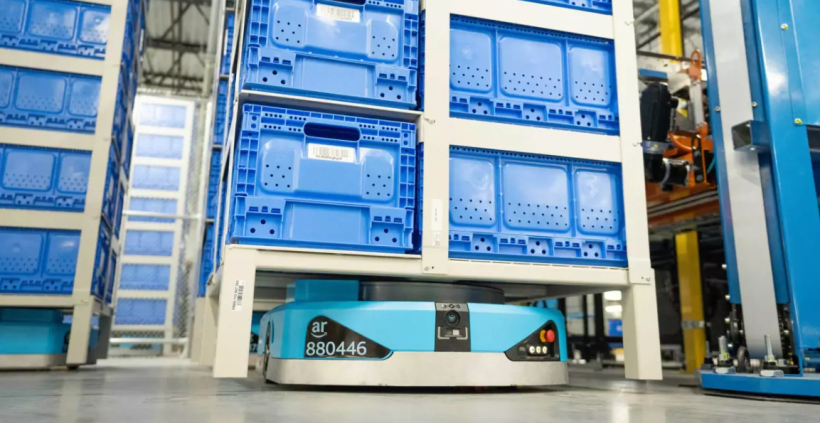
Amazon.com unveiled its cutting-edge robotic system, named "Sequoia," at one of its Houston warehouses, Reuters reports.
The system integrates a suite of automation technologies, including mobile robots and robotic arms, to revolutionize inventory management and expedite deliveries.
Sequoia's Swift Inventory Management
Amazon reports that the Sequoia robotic system is poised to identify and store inventory a staggering 75% faster than conventional methods.
Moreover, it is expected to reduce the time required to process orders at the warehouse by as much as 25%. This dramatic improvement in inventory processing and order fulfillment can redefine the e-commerce giant's operations and bring added convenience to its customers.
Complementary Collaboration Between Robots and Humans
Contrary to fears of automation replacing human workers, Amazon emphasizes that Sequoia is designed to work alongside human staff, augmenting their capabilities.
According to David Guerin, Director of Robotic Storage Technology at Amazon, a significant portion of the company's operations will incorporate these robotic systems over the next three to five years.
This collaborative approach aims to enhance workplace productivity while safeguarding employment opportunities.
Read Also: Some Google Pixel 6 Owners Encounter Storage Problems After Updating to Android 14
Key Components of Sequoia
Sequoia is founded on a series of innovative elements that have been in development and refinement at Amazon. Among these components is a new sorting and binning machine, which relocates containers from high shelves to waist level.
Amazon contends that this not only enhances safety but also reduces the risk of workplace injuries by eliminating the need for workers to reach up for heavy items.
The Sparrow robot arm is another integral part of Sequoia. This robotic arm can identify products within storage totes and efficiently extract them, streamlining the order fulfillment process.
Additionally, Sequoia integrates autonomous robots, Proteus and Hercules, which navigate the warehouse environment much like robotic vacuum cleaners. These robots can lift and transport shelves, distribute containers, and deliver products autonomously, thereby reducing the physical burden on human workers.
Competitive Landscape
Amazon's investment in automation, including Sequoia, is a testament to its dedication to maintaining a leading edge in the ever-evolving e-commerce sector.
Notably, this initiative is not isolated, as several major retailers have recently unveiled plans to invest in robotic systems to enhance operational efficiency and customer service.
Rival Walmart announced earlier this year that it anticipates approximately 65% of its stores being serviced by automation by the end of its fiscal year 2026.
This competition underscores the industry-wide recognition of the transformative potential of automation in improving sales, inventory management, and workplace safety.
As Amazon's Sequoia system begins operations in the Houston warehouse, the company demonstrates its commitment to delivering faster and more efficient services to its customers while emphasizing the collaboration between robots and human workers.
Stay posted here at Tech Times.
Related Article: Amazon, Expedia, Glassdoor, Others Form Coalition for Trusted Reviews to Combat Fake Reviews









